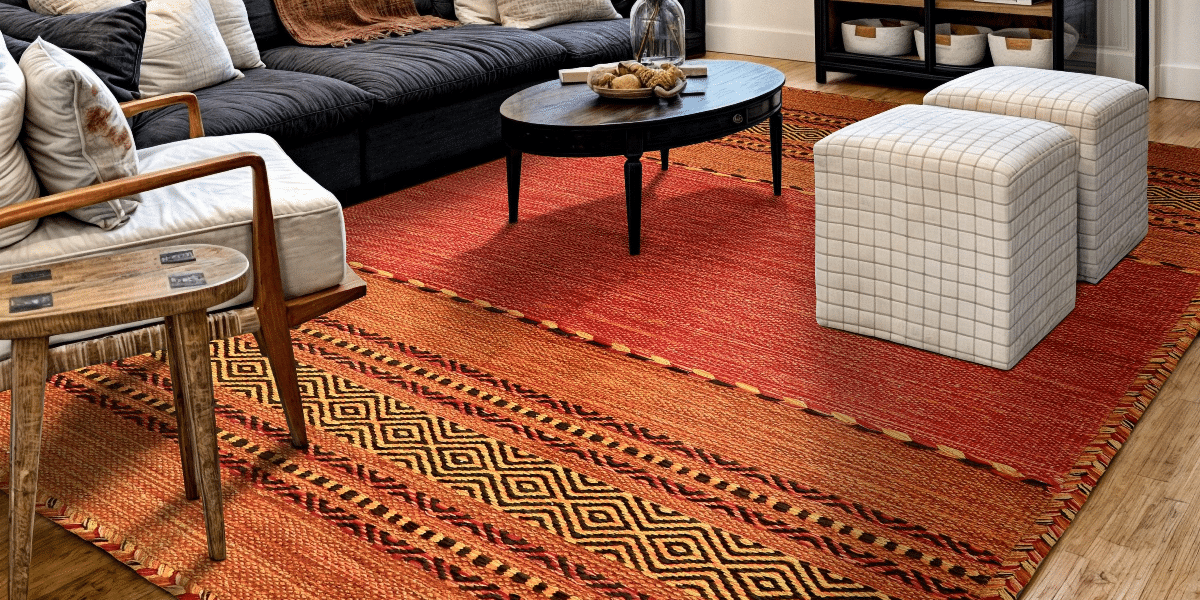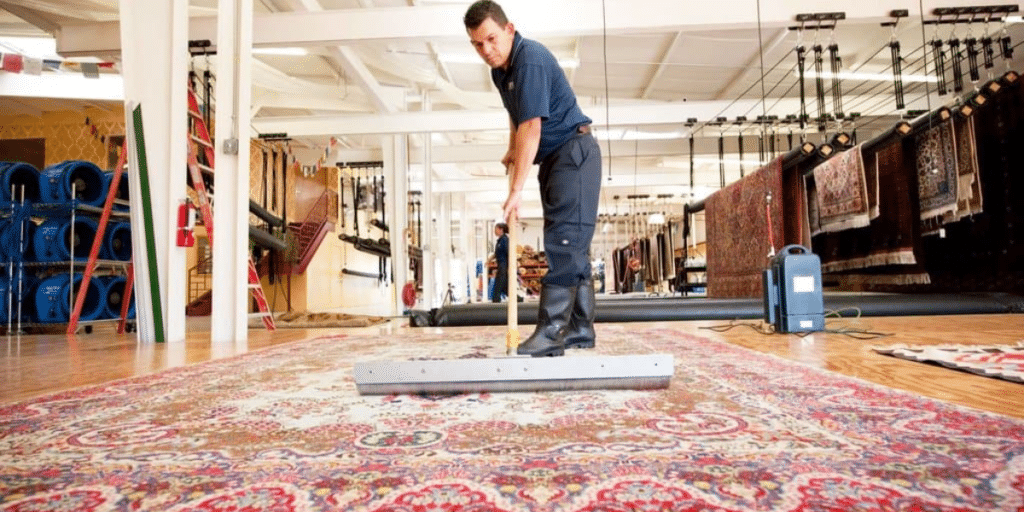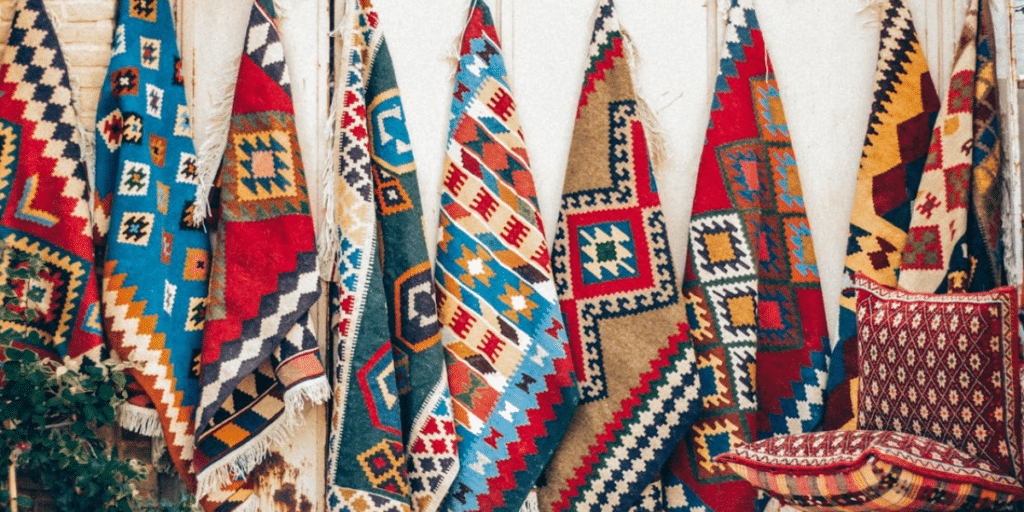A Kilim rug is a type of flat-woven textile traditionally produced in various regions, especially in parts of the Middle East, Central Asia, and North Africa. Unlike tufted or knotted rugs, kilims are woven using a technique where the weft (horizontal threads) are interwoven through the warp (vertical threads), creating a flat, smooth surface without pile.
In this article, we’ll explore the origins of kilim rugs, their distinct styles, and why they hold such high value. In short, a kilim rug is a flatwoven masterpiece that tells stories through its threads, blending functionality with history. Curious about the oldest kilim or why these rugs can cost a small fortune? Let’s unravel their fascinating world.
What Does Kilim Mean?
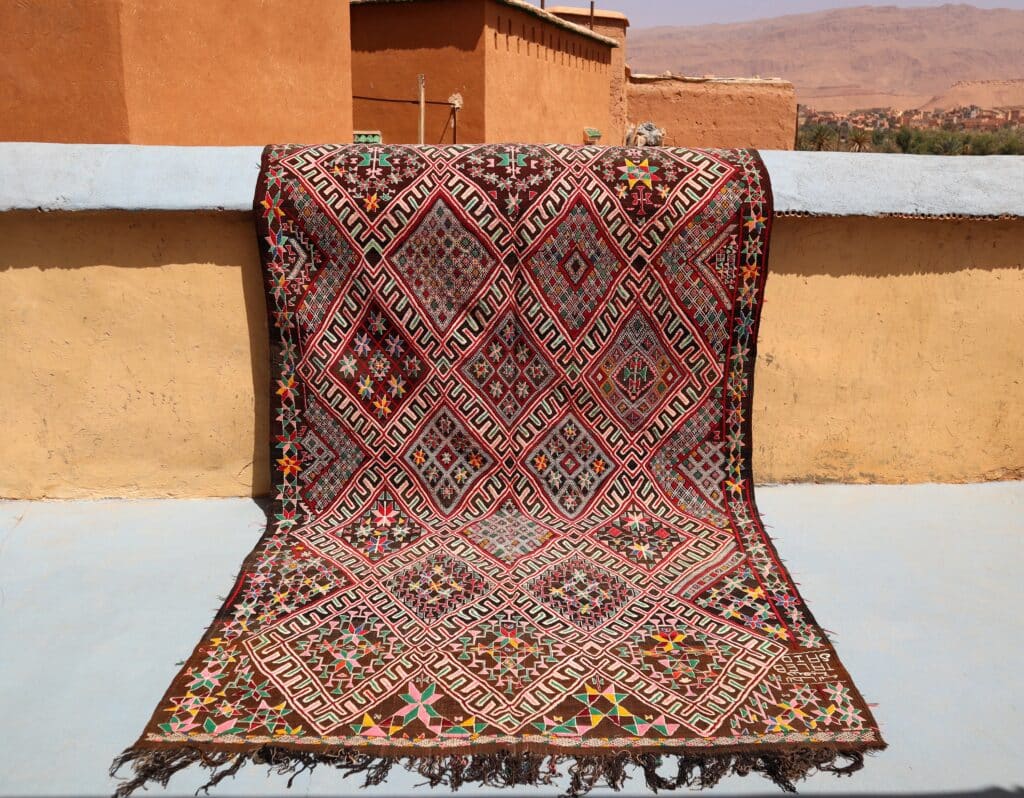
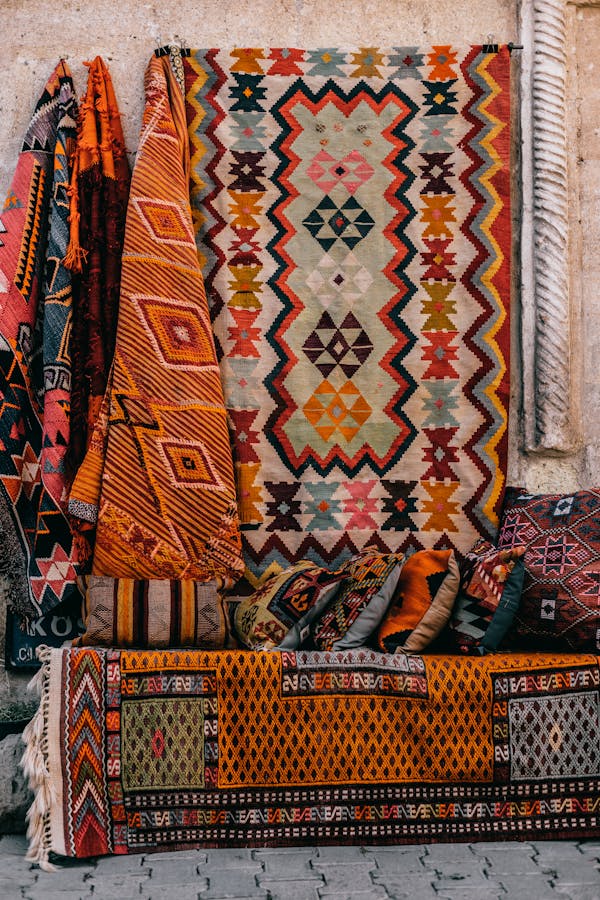
The word kilim comes from the Persian term gelīm, which means “to spread roughly.” It’s a simple way to describe the technique behind these rugs—flat weaving threads together to create a smooth, durable surface. Unlike other rugs that have a pile or a fuzzy texture, kilims are flat, lightweight, and tightly woven, making them both practical and beautiful.
Kilim rugs are often known for their vibrant, geometric designs and rich colors, which are achieved using natural dyes derived from plants, minerals, and insects. The designs can vary greatly depending on the region of production, but they typically feature bold patterns such as stripes, diamonds, and motifs inspired by nature, animals, or tribal symbols.
Kilims are used as floor coverings, wall hangings, and even furniture upholstery. Each design carries a meaning, like wishes for protection, love, or prosperity. So, a kilim isn’t just a rug—it’s a language woven into fabric.
Where are they from : the Kilim Rugs history?
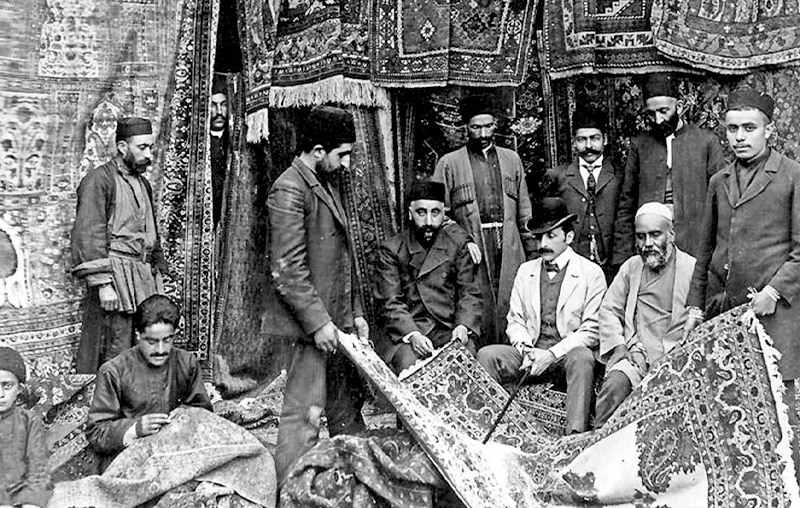
Kilims have a fascinating history that spans thousands of years. These rugs are primarily associated with regions like the Middle East, Central Asia, North Africa, and parts of Europe, particularly the Balkans. Each area has its distinct style and techniques, but the art of weaving kilims likely began with nomadic tribes.
The oldest evidence of flatweaving dates back as far as 7,000 BC in Anatolia (modern-day Turkey). These early weavings weren’t decorative but functional—used as blankets, tent covers, or floor mats. Over time, though, the art evolved. Weavers began incorporating symbolic patterns into their designs, turning functional pieces into works of art.
The weaving of kilims in Persia has been documented for thousands of years, with influences from ancient civilizations like the Persians, Medes, and Sassanids. The Turkic and Mongol tribes of Central Asia were skilled weavers, and kilims from this region often reflect a blend of Islamic, Turkic, and nomadic traditions.
By the Ottoman Empire era, kilims had become much more than household items. They were dowry gifts, ceremonial pieces, and even symbols of status. Each rug carried the identity of the weaver’s tribe or village, with designs that passed down through generations.
What Style Is Kilim?
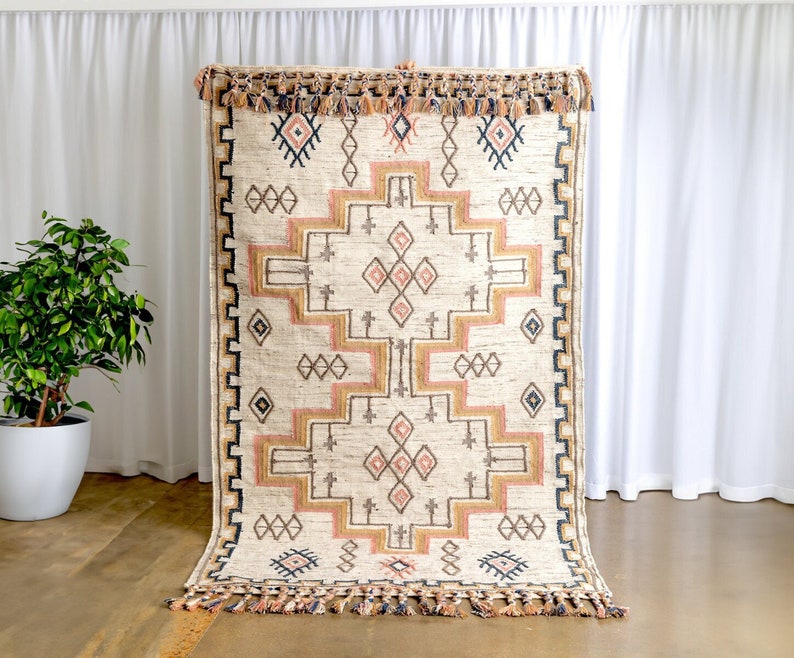
Kilim rugs have a unique style that blends rich tradition with modern versatility. They’re not just rugs—they’re statements of art and culture, loved for their ability to bring warmth and character into any space.
- Traditional Charm: Originally, kilims were staples in nomadic and rural homes. Their bold, geometric patterns and vibrant colors were as much about storytelling as decoration. Every design had a purpose—whether it was to protect from evil, celebrate fertility, or symbolize strength.
- Modern Appeal : What makes kilims so special today is how effortlessly they adapt to modern interiors. Whether your style is cozy and rustic, clean and minimalist, or anything in between, there’s a kilim that fits right in. In boho spaces, their colorful patterns add an eclectic, free-spirited energy. For minimalist homes, a neutral kilim introduces just enough texture to keep things visually interesting. And in farmhouse-style interiors, the handmade quality of a kilim complements wood and earthy tones beautifully, making it a versatile choice for any modern home
- Turkish Kilims: Kilims boast distinct characteristics based on their region of origin, each reflecting unique cultural traditions and artistry. Turkish kilims are known for their vibrant reds and symbolic motifs, often representing themes of protection or love. Persian kilims combine floral and geometric designs, showcasing rich, intricate detailing that adds sophistication. Meanwhile, Caucasian kilims stand out with bold, large shapes and high-contrast colors, creating a striking visual statement. Each regional style brings its own charm, making kilims not just decorative pieces but also a celebration of diverse cultural heritage.
What Are the Characteristics of a Kilim Rug?
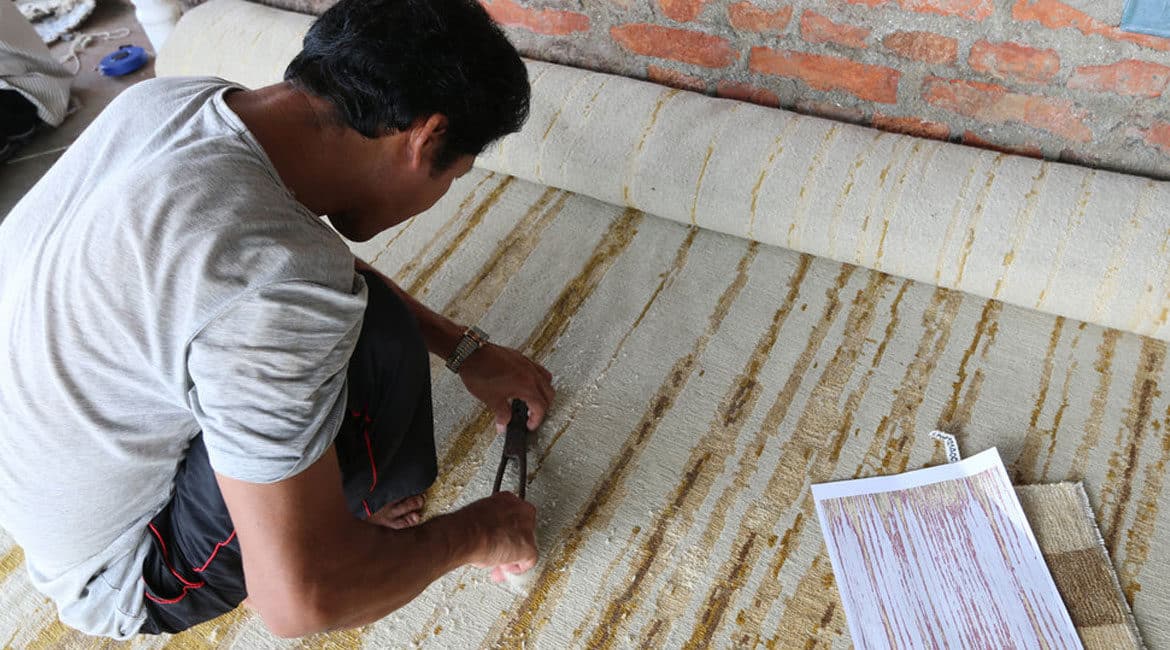
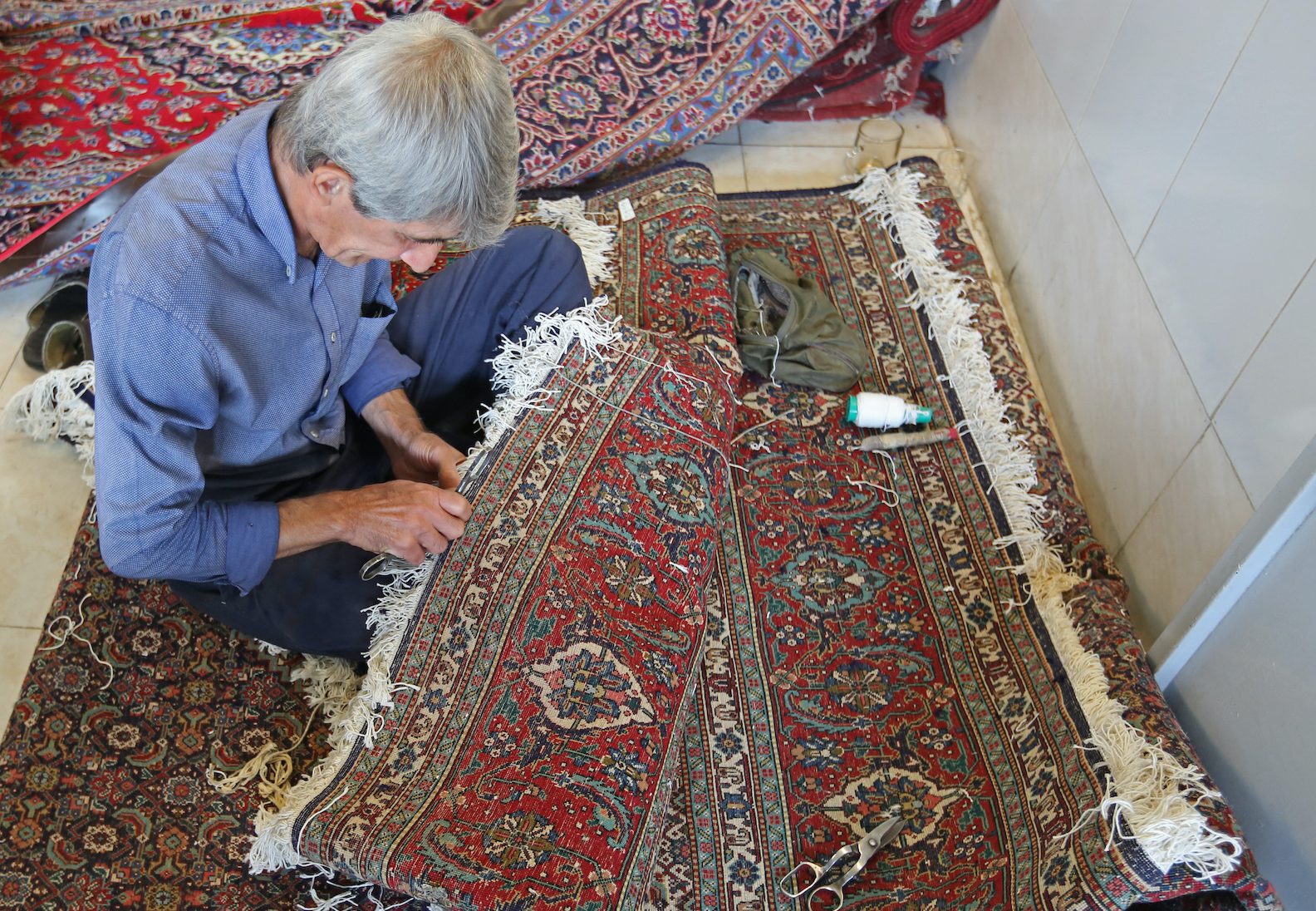
Kilim rugs are instantly recognizable for their unique look and feel. Unlike plush or pile rugs, kilims are flatwoven, giving them a sleek and lightweight texture. But there’s so much more to these rugs than meets the eye. Their characteristics are a blend of practicality, artistry, and cultural significance.
- Flatweave Construction: The standout feature of a kilim rug is its flatweave design. This technique involves tightly interweaving warp and weft threads, resulting in a rug that’s smooth and thin without the fluffy texture of a pile. This construction makes kilims durable, reversible, and easy to clean—perfect for both decorative and functional use.
- Geometric Patterns and Symbolism :Kilims are known for their bold, geometric patterns that often carry deeper meanings, with each motif telling a story or representing a wish. For example, diamonds symbolize protection from the evil eye, ram’s horns represent strength and power, and the tree of life signifies growth and connection. These designs go beyond mere decoration—they serve as a visual language passed down through generations, making each kilim a deeply personal and cultural artifact.
- Vibrant Colors: The colors of kilim rugs are another defining feature. Traditionally, the dyes are derived from natural sources like plants, flowers, and even insects. This gives kilims their rich reds, earthy yellows, deep blues, and warm browns. Over time, these colors fade into soft, muted tones, adding to their timeless charm.
- Lightweight and Versatile: Kilims are incredibly practical. Their lightweight nature makes them easy to move around and use in different ways. You’ll often find them as floor rugs, wall hangings, or even as upholstery for furniture. Their versatility makes them a favorite for creative decorators.
- Durability: Despite their lightweight design, kilims are tough. The tight weaving gives them incredible durability, making them suitable for high-traffic areas like hallways or living rooms. With proper care, a kilim can last for generations.
- Handmade Craftsmanship: Finally, no two kilims are exactly alike because they’re handmade. Every rug reflects the skill, creativity, and cultural heritage of the weaver. From the patterns to the color choices, each piece is a labor of love and a true work of art.
Why Are Kilim Rugs So Expensive?
If you’ve ever looked at the price tag on a kilim rug, you might have wondered why they cost so much. Here’s why:
- Handcrafted Masterpieces: A true kilim rug isn’t something that’s mass-produced in a factory. It’s woven by hand, often by artisans who have spent years mastering their craft. Depending on the size and complexity of the pattern, a single rug can take months—or even longer—to complete.
- High-Quality Materials :Authentic kilims are made from natural materials like wool, cotton, or silk. The dyes, often extracted from natural sources, add another layer of craftsmanship. This level of quality and care comes with a price.
- Cultural and Historical Value: Some kilims are antiques, and their age, rarity, and condition make them collector’s items. Even newer kilims carry cultural significance, which adds to their value.
- Longevity: A good kilim rug is an investment. With proper care, it can last for decades—or even generations. Its timeless design means it’ll never go out of style, making it a worthwhile splurge for many.
What is the Oldest Kilim?
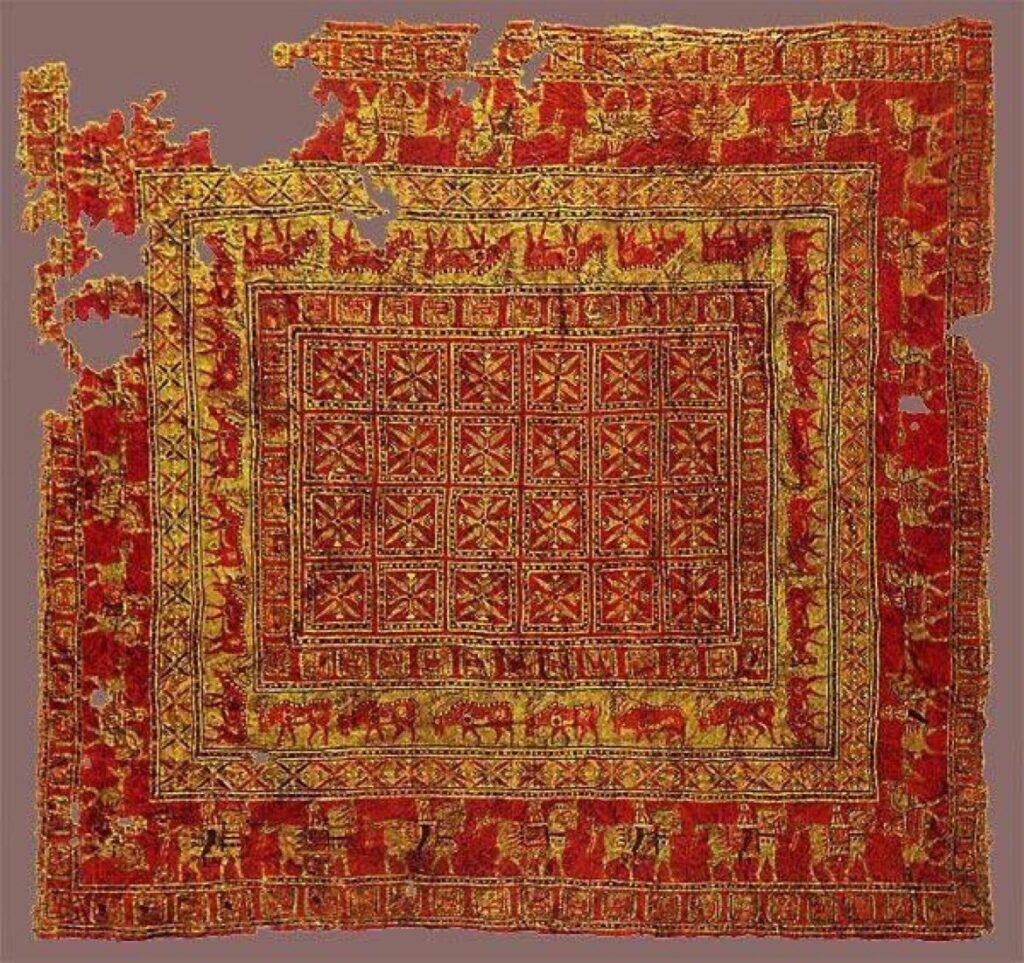
Kilims have a history that stretches back thousands of years, connecting us to some of the earliest human civilizations. One of the oldest known records of Turkish kilim patterns dates to approximately 7000 BCE, found on Neolithic pottery unearthed in an ancient settlement in modern-day Turkey. This discovery links the tradition of flatwoven textiles to one of humanity’s earliest urban centers.
The earliest surviving kilim, however, dates back to the 5th century CE. It was found in the Siberian Altai region, preserved in frozen tombs. This remarkable find provides a tangible connection to the past, showcasing how kilims were not only functional but also deeply artistic, even in ancient times.
Wrap Up

Kilim rugs | Worldwide delivery
Explore a diverse collection of rugs crafted for style and durability. From kilims to modern designs, find your perfect rug at Kilim Provenance.
Kilims are more than just rugs—they are narratives woven into threads, cultural symbols brought to life through art, and timeless pieces that bridge the past and present. At Kilim Provenance, we’re proud to offer a curated selection of handcrafted kilims that celebrate the artistry and tradition behind every piece. Whether you’re drawn to bold geometric patterns or subtle, earthy tones, our collection has something for every style.
